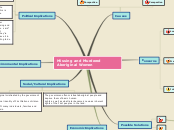Missing and Murdered Aboriginal Women
Causes
Perspective
Many Aboriginal women are taken advantage from because of the inequality that takes place in their lives. The majority of women who fall into the 1,200 number are between the ages of 19-30; Aboriginal women are eight times more likely to be killed than non-Aboriginal women; and over 40 per cent of Aboriginal women live in poverty.
Perspective
Statistics show that Aboriginals are significantly disadvantaged, particularly with regard to access to housing, education and employment.
Concerns
Local
The concern in a local level is more than important to all the people who are aboriginals because all the woman who are taking advantaged of are mothers, sisters, friends, daughters etc. Every year on October 4th Aboriginal communities and family members gather on this day to honor the missing and murdered indigenous woman and girls.
National
The National Roundtable believe that Indigenous woman and girls should be protected and have equal rights as everyone else so they came up with a unique opportunity for federal, provincial and territorial governments to come together with representatives from the families of missing and murdered Indigenous women and girls and create solutions that will ensure the saftey and protection of indigenous woman and girls. This decision was made to avoid any tragedy's that may occur later on in the future.
International
The issue of the missing and murdered aboriginal women is a big concern internationally, there's been marches, protests etc. Many people just want Canada to live up to the rights of humans because Aboriginals are considered to be not as important as other people therefore their voices don't matter as much.
Possible Solutions
NWAC (Native Women Association of Canada has developed a comprehensive policy strategy for implementation with the federal government, provincial/territorial governments, First Nations communities, and the international community on issues relating to the personal safety, security, and human rights of Aboriginal women. This framework is intended to strategically and holistically address the underlying factors that contribute to gendered racism against Aboriginal women resulting in their disappearance or death.
The Four key policy areas have been identified as the primary focus of the NWAC strategic policy plan:
Reduced violence
Improved education and employment outcomes
Safe housing
Access to justice
Political Implications
After the Native Women’s Association of Canada gathered information about 582 cases, possibly more of missing and murdered aboriginal women and girls, the federal government launched a a two-year, $54-million inquiry on Sept. 1, examining the issue.
Canada has often failed to provide an adequate standard of protection to Aboriginal women. This is extremely evident as more women and girls go missing.
On August 2014, Prime Minister Stephen Harper rejected renewed calls for an inquiry into missing and murdered aboriginal women in Canada. He also said" The RCMP has said itself in its study, the vast majority of these cases are addressed, and they're solved through police investigations, we'll leave it in their hands." Therefore meaning he wasn't willing to do anything to solve this issue.
Environmental Implications
Many indigenous families are worried for their safety and their children's safety. It still, till this day very dangerous to walk anywhere alone without being feared that they'll be attacked.
Racism and sexism are the main factors that contribute to the lack of safety, which causes the lack of police response, that are contributing to the unsafe situations.
Social/Cultural Implications
Not only were aboriginal mistreated by the government but they also
damaged the cultural identity of First Nations children in
the schools, and left many individuals, families and communities in crisis.
The governmen often mistreat aboriginal people and deprive them of basic human
rights as well as what later became known as inherent rights of the First peoples in the land.
Economic Implications
Many aboriginal families don't have the economic support to maintain their families which is why alot of them are in poverty. The employment rate for Aboriginal people is still far less than the general population (81.6 per cent). Not to mention Aboriginal people are twice as likely to be unemployed than non-Aboriginal people.
